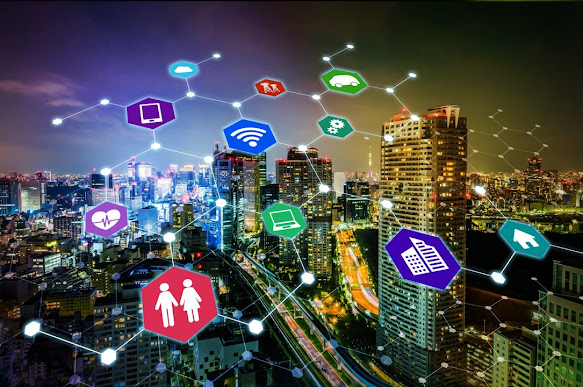The Internet of Things (IoT) has emerged as a transformative force, interconnecting devices, data, and people in an unprecedented manner. As we step into an era driven by hyperconnectivity and intelligent automation, the IoT market is experiencing significant growth and disruption.
The Internet of Things (IoT) is a rapidly growing market, with a projected value of over $1.5 trillion by 2025. There are a variety of different IoT market segments, each with its own unique growth potential.
This blog will delve into the current state of IoT market shares, explore key players and industries driving its growth, and provide insights into its promising future.
Key IoT Market Players
Here, we'll identify and profile major companies that have taken center stage in the IoT domain. From tech giants to startups, we'll highlight their contributions, products, and strategies, exploring how they have gained significant market shares.
Tech Titans: Companies like Google, Microsoft, and Amazon are capitalizing on IoT and shaping the market.
Niche Innovators: Smaller companies and startups are making breakthroughs in specific IoT verticals.
IoT Adoption in Diverse Industries
This section will spotlight various industries that have embraced IoT solutions to optimize processes, enhance customer experiences, and drive innovation. Industries to cover may include:
Healthcare: IoT is revolutionizing healthcare with remote patient monitoring, wearable devices, and smart medical equipment.
Smart Cities: IoT is transforming urban landscapes by improving transportation, waste management, and public safety.
Agriculture: IoT applications are modernizing agriculture with precision farming techniques, smart irrigation, and livestock monitoring.
Industrial IoT (IIoT): IoT is driving Industry 4.0 with enhanced automation, predictive maintenance, and real-time analytics.
Some of the largest IoT market segments include:
Industrial IoT: This segment is expected to grow at a CAGR of 19.4% from 2020 to 2025. Industrial IoT refers to the use of IoT devices and sensors in industrial settings. These devices can be used to collect data on everything from machine performance to environmental conditions. This data can then be used to improve efficiency, optimize operations, and prevent downtime.
Consumer IoT: This segment is expected to grow at a CAGR of 18.4% from 2020 to 2025. Consumer IoT refers to the use of IoT devices and sensors in homes and businesses. These devices can be used to automate tasks, monitor activities, and provide entertainment. For example, smart thermostats can automatically adjust the temperature of your home based on your schedule, and smart speakers can play music, answer questions, and control other smart devices.
Transportation IoT: This segment is expected to grow at a CAGR of 17.5% from 2020 to 2025. Transportation IoT refers to the use of IoT devices and sensors in vehicles, transportation infrastructure, and logistics. These devices can be used to track assets, improve traffic management, and prevent accidents. For example, connected cars can automatically alert emergency services if they are involved in an accident.
The future of the IoT market is very bright:
The continued growth of the IoT market will be driven by a number of factors, including:
- The increasing availability of low-cost, high-performance sensors and devices.
- The growing demand for data-driven insights.
- The increasing adoption of cloud computing and big data analytics.
- The development of new IoT-enabled applications and services.
The IoT market is still in its early stages, but it has the potential to revolutionize many industries. As the IoT market matures, we can expect to see even more innovative applications and services that improve our lives and businesses.
Here are some of the key trends that are expected to shape the future of the IoT market:
- The increasing adoption of 5G networks.
- The growth of the smart home and smart city markets.
- The development of new IoT-enabled healthcare applications.
- The rise of the Industrial Internet of Things (IIoT).
Challenges and Concerns in the IoT Landscape
As with any transformative technology, IoT faces challenges like data security, privacy concerns, and interoperability issues. We will delve into these challenges and discuss how the industry is working to address them.
The IoT market is a rapidly growing and evolving market. It is a market with the potential to revolutionize many industries and improve our lives in many ways. As the IoT market matures, we can expect to see even more innovative applications and services that make our lives easier, more efficient, and more enjoyable.
Conclusion
The Internet of Things is a rapidly evolving domain that continues to influence our daily lives, businesses, and industries. By understanding the current market shares and exploring future trends, we can better comprehend the transformative potential of IoT. As the world becomes increasingly interconnected, embracing IoT innovation becomes imperative for companies and individuals to remain competitive and participate in the technology-driven future.



No comments:
Post a Comment